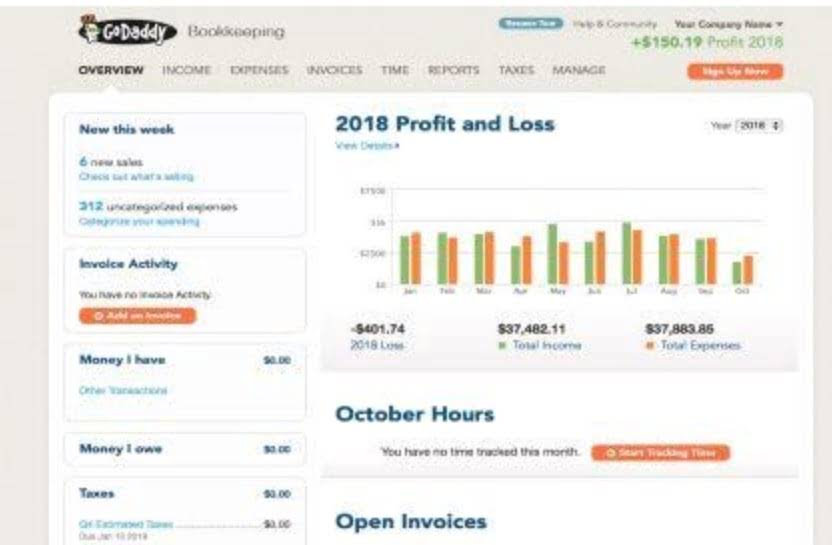What Is the Opening Balance Equity Account in QuickBooks?
- Posted on 20 de dezembro de 2022
- in Bookkeeping
- by admin

Opening Balance Equity in a subsequent year is a serious problem and can easily result in profit and loss being incorrect on the profit and loss statement. When you make a nonzero account inactive, QuickBooks will warn you that it will zero out its balance. The image below shows the warning you’ll see when you do this—and you’ll have to click the Yes, make inactive button to proceed.

Debits and Credits in Accounting: A Simple Breakdown
It was a purchase six month after the business started and six month into QBO. I made this purchase in 2017 so it should have just been part of the total inventory asset only, and not OBE. This inventory is still on hand so that’s why I was hesitant to edit the opening balance because it will also deduct from inventory asset. Let’s explore why it’s essential to do an account balance check and how you can do it using different methods. Following the transaction the equity (share capital) of the business will increase by 100.
- Once reconciled, the discrepancies are resolved, and the Opening Balance Equity is brought to zero, resulting in a more accurate representation of the company’s financial position.
- By entering the opening balance accurately, businesses are able to track their financial position, monitor cash flow, and reconcile their bank statements effectively.
- You might want to automate your accounting to eliminate errors, have your transactions categorized correctly and funds allocated properly.
- The issue of how to zero out the opening balance equity in QuickBooks is when you initially set up your firm and has a solution in opening balance equity in the QuickBooks.
- This is also known as net profits or net earnings of a company, and as a form of equity, it can be reinvested into the company for growth purposes and is used to determine what the business is worth.
How to Enter an Opening Balance in QuickBooks
If there’s a left-over balance in the Opening Equity account, it should go to other equity accounts or retained earnings. If you have pending transactions for your real-life bank or credit card accounts, don’t worry. Once you have your bank statement and the pending transactions clear the bank, come back and adjust your opening balance entry. In other cases, such as complex accounting adjustments or ongoing errors, a balance in the OBE account signals of a more critical impact on your accounting. In such situations, it’s essential to investigate the cause of the balance and take appropriate actions to resolve any discrepancies or errors in the accounting records. Debit the equity accounts you want to allocate the funds to, and credit the https://www.bookstime.com/ for the same amount.
Bank Accounts
They offer a comprehensive overview of a company’s financial health, performance, and position, enabling effective analysis and forecasting. The precision of these statements is pivotal in compliance with accounting standards and regulations, fostering transparency and trust. If the amount of the journal accounting entry does not support the amount on your bank statement and you close it out, the software will rearrange the opening balance equity account balance. Your accounts in QuickBooks need to match the real-life bank and credit card accounts you’re tracking. When you create a new account in QuickBooks, you pick a day to start tracking transactions.

Starting of a New Business
Setting up your business accounting in QuickBooks (or other accounting software) for the first time, it’s likely that you may not have encountered an opening balance equity account yet. The opening balance equity account typically does not appear on financial statements like the balance sheet, so you might be unaware of its existence. The establishment of Opening Balance Equity is a fundamental step in the creation or transition of a company’s financial records. It is the initial phase where past financial information is integrated into new accounting systems, setting the stage for accurate and comprehensive financial reporting. If you’re adding a new account subsequent to the initial setup, never enter an opening balance. Instead, set the account up with a zero opening balance and then input the transaction necessary to record the balance.

This will almost always be from one of the situations described above where an opening balance was mistakenly entered into an account. If it is not, this means an unbalanced or unaccounted-for entry in your balance sheet needs to be looked at closer. Your current balance might not always represent the exact amount of money you have due to pending transactions or holds placed by the bank. If you’ve recently used your debit card, the purchase amount might still be pending and not yet deducted from your available balance.
- During the setup process, QuickBooks prompts you to enter the initial balances for your accounts, including balances for assets, liabilities, equity, income, and expenses.
- Your opening balance equity will be used to enter in a unique account which you will only use once whenever you are setting up your business in QuickBooks.
- – Close the balance equity to “Owner’s Equity” if the company is a sole-proprietorship organization.
- The goal is to ensure that these amounts are subsequently allocated to the correct equity accounts in a timely manner.
- It’s crucial to double-check the accuracy of the entered data to avoid any discrepancies in your financial reporting.
- I’m here to provide the steps to help locate it and suggest a process to resolve the discrepancies in the account.
- At the beginning of a new accounting period, such as a new month or year, you typically have account balances from the previous period, representing the financial position of your business at the end of it.
This will effectively reduce the balance of the opening balance equity account and set it to zero. To do so, you might want to create a journal entry to transfer the balance of the OBE account to the appropriate equity accounts. Another way is to create equity accounts with zero balances and then distribute the amount still remaining on the OBE account to them accordingly through journal entries.
- In case the balances don’t match, it can lead to lingering balance, which can be cleaned up using software like Deskera.
- The equity accounts of the amalgamated firms are compared using the opening balance equity account to resolve any discrepancies.
- During the audit, the focus is on validating the existence of assets and liabilities that contribute to the Opening Balance Equity.
- Review your monthly bank statement, which is either mailed to you or available online.
- Zeroing out Opening Balance Equity in QuickBooks Online enables a clearer understanding of business performance, facilitating informed financial decision-making and strategic planning.
- Utilizing efficient accounting software can streamline this process and enhance the overall reconciliation procedures.
- If you need to add transactions that are older than the opening balance, you need to edit the start date and balance.
- For that, you need to add an opening-balance equity account to maintain the accounts equally.
- It ensures that the financial reports generated through Quickbooks reflect a true and fair view of the company’s financial position.
- Ultimately, this practice is crucial for maintaining the financial accuracy and integrity of a company’s records.
- Once the journal entry is made, it will have a direct impact on the balance sheet and income statement, eliminating any anomalies and providing a true representation of the company’s financial health.
- Now that we clarified the terms, let’s look at the scenarios where you have an opening balance equity in your chart of accounts.
How does QuickBooks Online Handle Opening Balance Equity?







